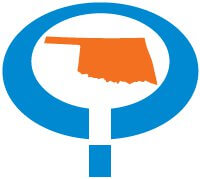

(Editor’s note: This story was authored by Jennifer Palmer of Oklahoma Watch and appears here in accordance with the non-profit journalism organization’s republishing terms.)
Oklahoma is moving closer to changing the way it funds schools after a yearlong look at the education funding formula by a group of lawmakers and educators.
The group’s proposed tweaks include a greater emphasis on low-income students, a revised definition of English-language learners and fewer categories of students based on grade level.
The task force, led by Sen. Gary Stanislawski (R-Tulsa), concluded its work Monday. The group’s final recommendations will next be sent to the governor and Senate pro tempore.
Stanislawski, who chairs the Senate Education Committee, and other lawmakers are expected to file bills in the upcoming legislative session based on the group’s recommendations.
Task force members include school superintendents from districts of varying sizes, lawmakers, state Department of Education staff and other stakeholders. Their focus was to examine how funds are allocated and suggest ways to make the process simpler; they weren’t working to find more money for schools.
Oklahoma’s school funding formula is notoriously complicated, and some elements haven’t been adjusted in decades despite major changes in education and student needs.
“There are very few people who really understand our funding formula,” said Shawn Hime, executive director of the Oklahoma State School Boards Association.
The state funding formula is designed to cover the gap between local revenue and the amount necessary to run high-quality schools in each community.
The simplified version of Oklahoma school funding looks like this: School districts add up the number of students using a weighted formula that assigns extra amounts for higher needs, such as having a disability, being gifted or talented, or for bilingual students. For example, a kindergartner whose family is economically disadvantaged would be weighted 1.75 (1.5 for full-day kindergarten plus 0.25 for being low-income).
The total weighted amount for students is multiplied by a base amount set by the state (this year, it’s $3,422). That is the district’s total need. Local funding revenue, such as property taxes, is subtracted from the total need and the difference is how much the district will receive from the state.
But the current formula splits the total need into two parts: foundation aid and salary incentive aid. And different local revenue streams are subtracted from each. That’s unnecessarily complicated, the task force found, and it recommended combining foundation aid and salary incentive aid.
Four other proposed changes include:
Increase the weight for low-income students. Measures of school poverty have long been based on how many students qualify for free or reduced-price lunch. But changes to the federal meal program that allow schools to feed all students for free have thrown a wrench in that calculation. Task force members ultimately decided not to change the way schools qualify students. However, they all seemed to agree the current weight of 0.25 doesn’t adequately compensate for low-income students’ needs and proposed increasing it to 0.5.
Reduce the number of grade-based weights. Currently, there are 10 different weights based on a student’s grade, ranging from 0.7 to 1.5. Only fourth- through sixth-grade students are weighted 1.0. The weights also don’t reflect what schools actually spend, which is on average more for high school students than elementary and middle school students. Stanislawski recommended weighting half-day students 0.6; full-day, pre-K and high school students 1.2, and all other students 1.0. (Not everyone agreed with this. State Superintendent of Public Instruction Joy Hofmeister said she wanted to run the numbers first to determine the actual impact to districts. Hime cautioned that the change would be unfavorable among dependent school districts, which don’t have high schools.)
Redefine English learners. Oklahoma now uses a designation of “bilingual” for students who require language services, but the students aren’t always learning English. Bilingual means a language other than English is spoken at home; the student may actually be fluent in English. Once a student is designated bilingual, the designation stays with them throughout their school career. The task force recommended designating students as English learners using a home-language survey and also increasing those students’ weight from 0.25 to 0.5.
Base virtual charter school funding on actual student weights. Currently, virtual charter schools receive their initial state aid allotment based on actual enrollment but with all students weighted 1.333. Then, the schools’ mid-year adjustment takes actual student weights into account. The result is virtual charter schools end up with a big increase in funding at mid-year. The task force proposed a change in statute that would weight virtual charter students at 1.333 in the school’s first year but otherwise rely on actual student weights.





















